Annual cicadas of Louisiana (LA):
All cicadas appear every year unless otherwise noted.
Cicadettana calliope calliope (Walker, 1850) aka Southern Grass Cicada
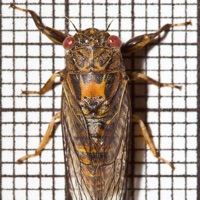
Cicadettana kansa (Davis, 1919)
Diceroprocta bequaerti (Davis, 1917) aka Scrub Cicada
Diceroprocta delicata (Osborn, 1906) aka Scrub Cicada
Diceroprocta viridifascia (Walker, 1850) aka Salt Marsh Cicada
Megatibicen grossus (Fabricius, 1775) aka Northern Dusk Singing Cicada formerly Megatibicen auletes
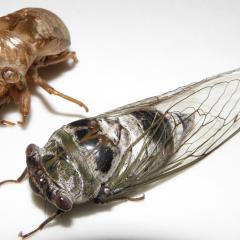
Megatibicen figuratus (Walker, 1858) aka Fall Southeastern Dusk-singing Cicada
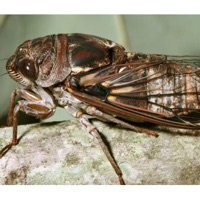
Megatibicen pronotalis walkeri Metcalf, 1955 aka Walker’s Cicada
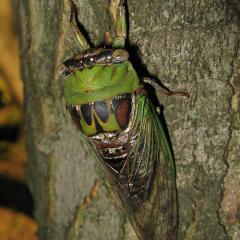
Megatibicen resonans (Walker, 1850) aka Southern Resonant/Great Pine Barrens Cicada
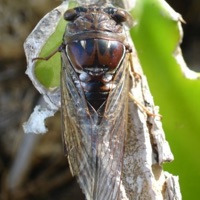
Neocicada hieroglyphica hieroglyphica (Say, 1830) aka Hieroglyphic Cicada

Neotibicen davisi davisi (Smith and Grossbeck, 1907) aka Davis’ Southeastern Dog-Day Cicada
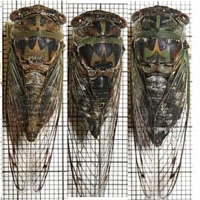
Neotibicen pruinosus pruinosus (Say, 1825) aka Scissor(s) Grinder
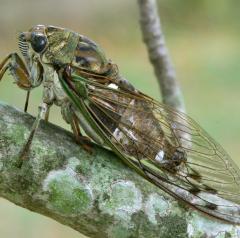
Neotibicen similaris similaris (Smith and Grossbeck, 1907) aka Similar Dog-Day Cicada
Neotibicen tibicen tibicen (Linnaeus, 1758) aka Swamp Cicada, Morning Cicada
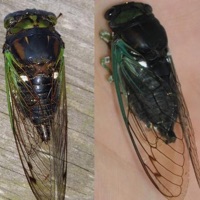
Okanagana viridis Davis, 1918 aka Cotton Green Cicada
Periodical cicadas of Louisiana (LA):
Magicicada tredecim (Walsh and Riley, 1868) aka 13-Year Cicada or 13-Year Decim
These cicadas will next appear in 2024 (Brood XIX), 2027 (Brood XXII) and 2028 (Brood XXIII). They often emerge 1 or 4 years earlier than expected.
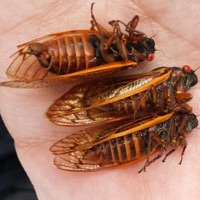
Magicicada tredecula Alexander and Moore, 1962 aka 13-Year Cicada or 13-Year Decula
These cicadas will next appear in 2024 (Brood XIX), 2027 (Brood XXII) and 2028 (Brood XXIII). They often emerge 1 or 4 years earlier than expected.
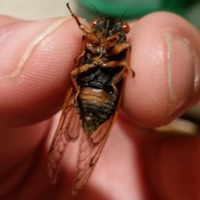
Related Articles
- New paper about Brood XXII Magicicadas
- The 2015 Brood XXIII Emergence Revisited
- Brood XXIII, the Lower Mississippi Valley brood, will emerge in 2015
- Brood XXII, the Baton Rouge Brood, will arrive in 2014
- Cicada Beer and Brood XXII
- Periodical cicada Brood XIX (19) will emerge in 2024 in Fifteen States
- A Brood XIX Periodical Cicada Primer
Name and Location References:
- Full Binomial Names: ITIS.gov
- Common names & locations: BugGuide.net; iNaturalist.com; The Songs of Insects by Lang Elliott and Wil Herschberger; my personal memory.
- Locations: Biogeography of the Cicadas (Hemiptera: Cicadidae) of North America, North of Mexico by Allen F. Sanborn and Polly K. Phillips.
- List of species with MAPs: Biogeography of the Cicadas (Hemiptera: Cicadidae) of North America, North of Mexico [PDF] by Allen F. Sanborn and Polly K. Phillips. Download it once; treasure it forever.
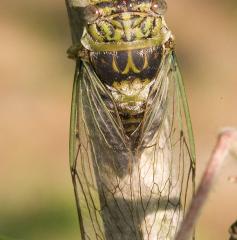
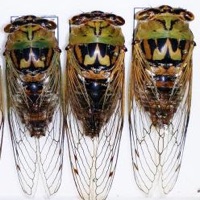
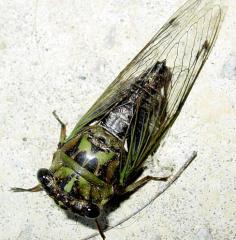
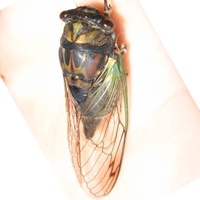
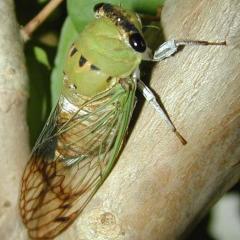
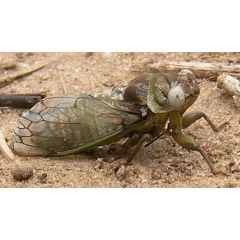
3 replies on “Common cicadas of Louisiana”
I have been catching cicadas in New Orleans and wondered, why do my cicadas sound like N. tibicen australis but look exactly like N. tibicen?
Maybe the southern N. t. t.’s are closely related to the N. t. a.’s than the northern ones?
they sound like normal tibicen tibicen but without the clicking sound like in a normal sound file